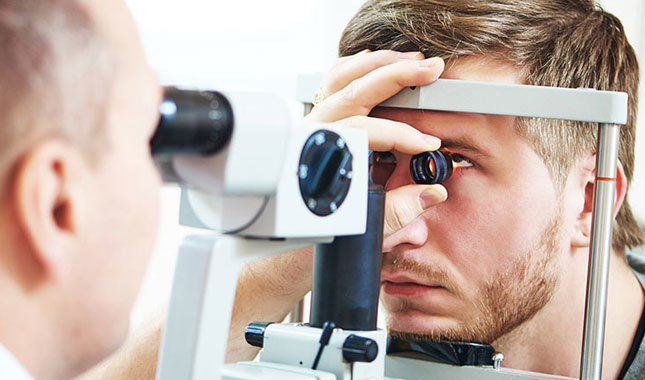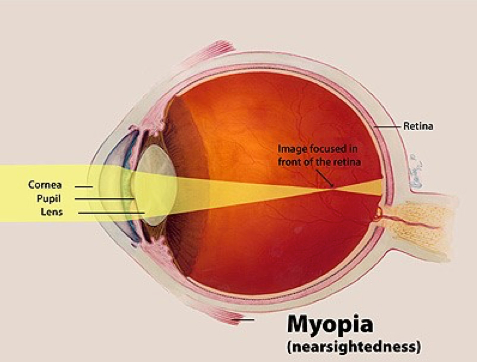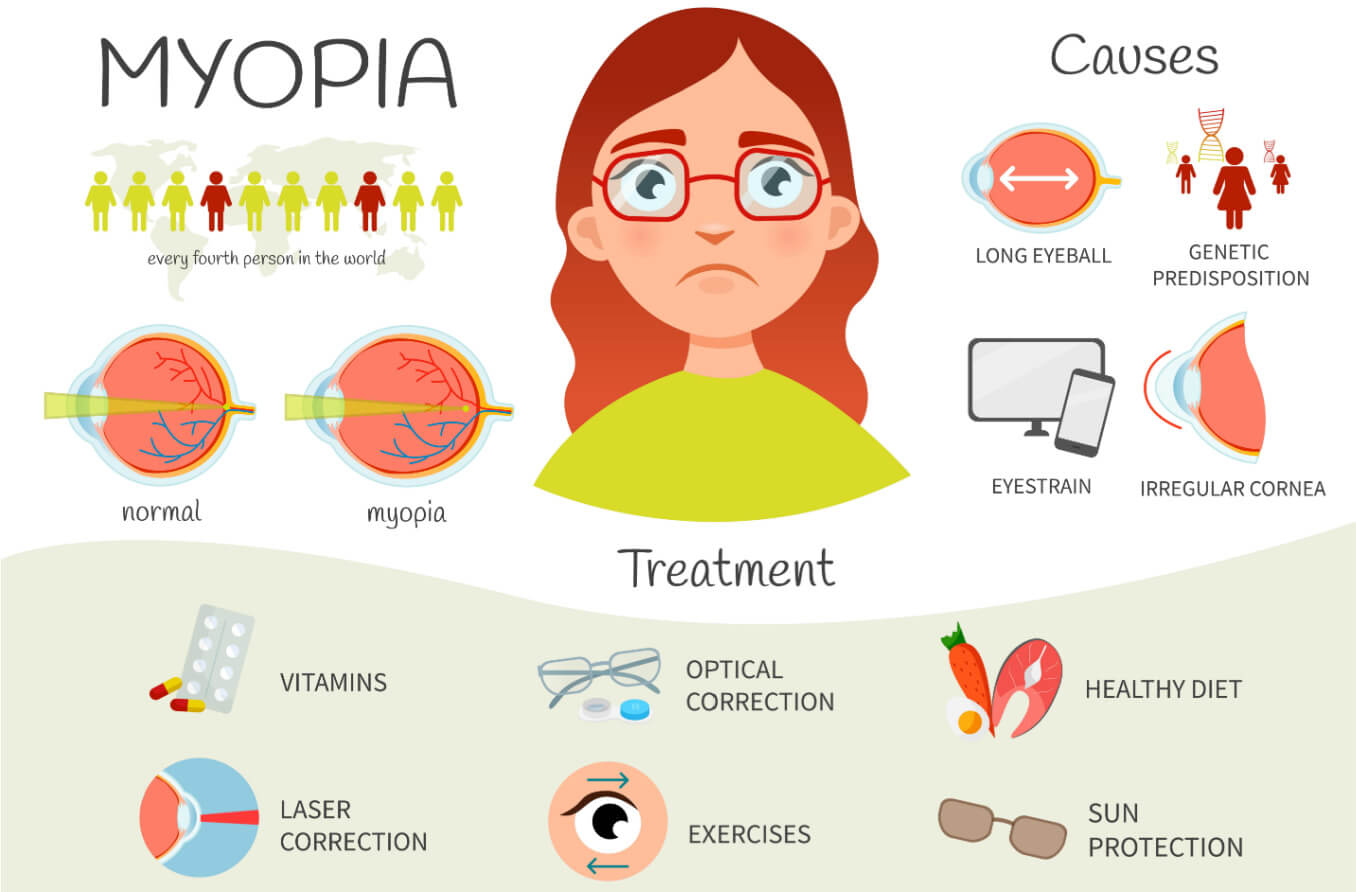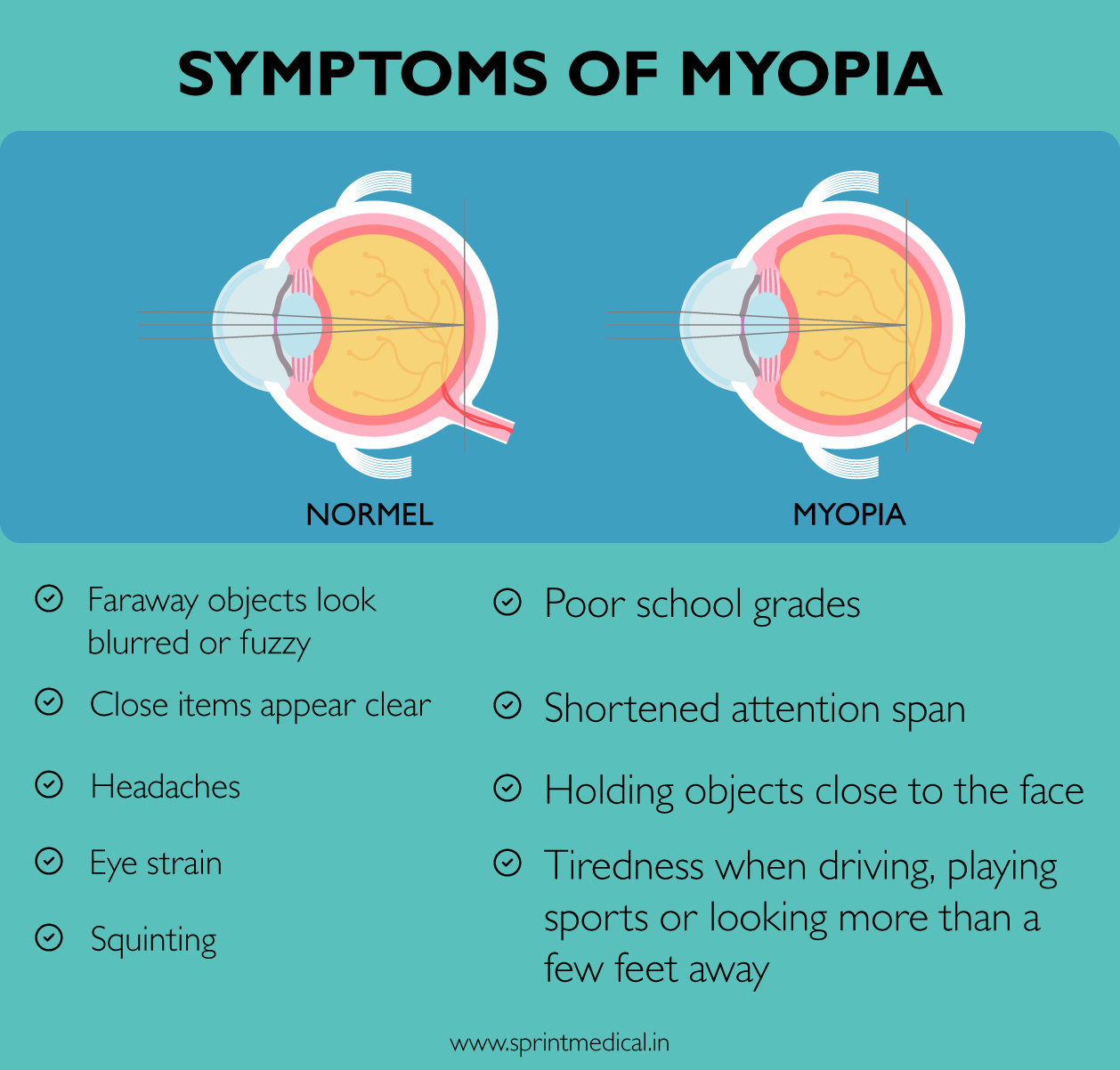What is myopia? What are the symptoms of myopia?
Myopia is a common vision defect in which near objects are seen clearly but distant objects are seen blurry. In people with myopia, the shape of the eyeball causes light rays to refract incorrectly, causing images to focus in front of the retina instead of on the retina.

What is myopia?
Nearsightedness, or myopia, is an eye problem that causes distant objects to appear blurry, while close objects cannot be seen clearly. The degree of myopia can vary from a mild form where no treatment is required to a severe form where vision is significantly affected. In children, it can start between the ages of 6 and 13. It can get worse during the teenage years, when the body is growing rapidly. The disorder can also occur in adulthood.
What causes myopia?
The eye has two parts, the cornea and the lens, that focus images. The cornea is the dome-shaped clear surface of the eye. The lens is a transparent biconvex structure. In a normally shaped eye, each of these focusing elements has a smooth curvature, like the surface of a marble. A cornea and lens with normal curvature refract the light entering the eye and focus it sharply on the retina at the back of the eye. But if the surface of the cornea or lens is not smooth and smoothly curved, the light rays are not refracted properly and a refractive error occurs. Nearsightedness usually occurs if the eyeball is longer than normal or the cornea is excessively curved. In these cases, light focuses in front of the retina instead of focusing exactly on it. The result of this situation is a blurry image for distant objects. When the length of the eyeball is longer than normal, the image of distant objects falls in front of the retina instead of directly on the retina. As a result, blurred vision occurs. Some risk factors can increase the likelihood of developing myopia. These risk factors may include:

Genetics: Myopia tends to be genetically transmitted. If one of the parents has myopia, the person's likelihood of developing this eye defect increases. The risk is even higher if both parents have myopia.
Over-reading and working at close range: People who read, write, or do work at a computer a lot may be at risk for myopia. The length of time spent playing computer games or watching television may play a role in the development of nearsightedness. Holding reading material too close has been associated with increased myopia. Focusing on nearby objects such as books and computers for a long time, especially in childhood, is considered a cause of myopia. Therefore, ensuring your child regularly spends time playing outside can help reduce the risk of developing short-sightedness.
Environmental conditions. Some studies have shown a relationship between limited time spent outdoors and an increased risk of myopia.

What are the symptoms of myopia?

Symptoms of myopia in adults may include:
- Blurred vision of distant objects
- The need to squint or partially close the eyelids to see clearly
- Eye fatigue and related headache
- Difficulty seeing while driving, especially at night
Myopia is often detected in early childhood. A child who has trouble seeing distant objects may experience the following symptoms:
- Persistent strabismus in the eyes
- Feeling the need to sit closer to the television, movie screen, or front of the classroom
- Pretending to be unaware of distant objects
- Having difficulty reading what is written on the board at school
- excessive blinking
- Rubbing eyes frequently
Eye problems associated with myopia
Some adults with short-sightedness and young children with untreated myopia are more likely to develop certain other eye problems. The tissues in the long eyeball become stretched and thinned, paving the way for various eye problems. Secondary eye problems that may develop may include:
- Strabismus: A common childhood problem in which the eyes look in different directions.
- Amblyopia: It is a childhood eye disease that may occur due to the lack of use of the less vision eye and where the vision in the relevant eye does not develop correctly.
- Glaucoma: A serious eye condition characterized by increased intraocular pressure.
- Cataract: Visual defect characterized by the loss of transparency of the eye lens.
- Retinal detachment: It is an eye problem that occurs when some areas of the retina separate from the blood vessels that provide oxygen and nutrients
myopia test
If a person suspects that he or his child has myopia, he or she should consult an ophthalmologist and have a test. A vision test can confirm whether a person has a problem with near or distance vision, and the doctor can prescribe glasses or contact lenses to correct the problem.
Testing for myopia is done to measure how well the eyes focus light and determine the degree of optical lenses needed to correct reduced vision. As part of the test, you will be asked to identify letters or symbols on a Snellen chart or similar chart and your visual acuity will be measured. This test measures visual acuity, written as a fraction such as 20/40. The number in the numerator of the fraction is a constant and represents the standard distance at which the test was performed (20 feet). The number in the denominator indicates the smallest letter size read. A person with 20/40 visual acuity must fall within 20 feet to identify a letter that is clearly visible from 40 feet with a "normal" eye. 1 foot corresponds to 30.48 centimeters. Visual acuity at normal distance is 20/20, although many people have 20/15 (better) vision.
The ophthalmologist places a series of lenses in front of the eye with the help of a device called a phoropter and measures how the eyes focus light using a lighted instrument called a retinoscope. He or she may use an automated tool to evaluate the eye's focusing power. The glasses prescription, that is, the degree of myopia, is determined by trying lenses that enable clearer vision based on the person's responses. Your ophthalmologist may perform this test without using eye drops to determine how your eyes respond under normal vision conditions. Eye drops may be used in some circumstances, such as patients who cannot respond verbally or when some of the eye's focusing power may be obscured. Eye drops temporarily prevent the eyes from changing focus during the test.
How is myopia treated?
Myopia can often be corrected effectively with a variety of treatments. Methods used in treatment include:
- Use of contact lenses or glasses. Glasses or contact lenses may be used to help the eyes focus distant objects on the retina. For most people with myopia, the first choice of treatment is glasses. For some people, contact lenses offer clearer vision and a wider field of view than glasses. However, since contact lenses are worn directly on the eyes, a number of precautions must be taken during their use to protect eye health. Depending on the severity of myopia, you may be advised to use glasses or contact lenses constantly or during moderate activities.
- Laser eye surgery. Laser eye surgery may be performed to change the shape of the eyeball. It is not suitable for children as the eyes are still developing.
- Artificial lens implants. Artificially obtained lenses can be permanently implanted into the eyes to achieve accurate focusing.
- Intracorneal rings. Plastic corneal rings called INTACS are implanted in the eye to change the shape of the cornea. The advantage of rings is that they can be left in place permanently, removed if there are problems, or adjusted when changes need to be made.






































